20 Budget-Friendly Products That Pay for Themselves (And Then Some)
Last updated: Apr 7, 2023

Are you looking for ways to save money without sacrificing quality or convenience? Look no further! In this article, I will share with you a list of inexpensive items that have a high return on investment.
These items are so valuable that if they were stocks, they would be too good to pass up. What's more, they often save you time and effort in addition to money, making it a win-win-win situation.
While some of these items may be unconventional, I urge you to read on and learn about the reasons behind their value. Keep in mind that the actual return on investment will depend on your individual costs and whether you choose to purchase the items.
To help you make an informed decision, you can use our calculator to estimate your potential profits. So, what are you waiting for? Let's dive in and start saving!
1. Bidets

Avg Annual Return: 40%
Bidets seems to be very uncontroversial, and for some reason, people are hesitant to even try it out.
I can't figure out why this is the case. Bidets offers benefits that go beyond just monetary value; it also provides increased sanitation and saves time.
Pros:
- Improved hygiene: Bidets are far more sanitary than toilet paper, as they use water to clean instead of wiping with paper, which can spread bacteria and cause irritation.
- Reduced use of toilet paper: Bidets can help you reduce or eliminate your reliance on toilet paper, which not only saves money on purchases but also benefits the environment.
- Lower risk of anal problems: Bidets can reduce the risk of hemorrhoids, anal fissures, and other issues that can arise from wiping too hard or using rough toilet paper.
- Minimal effort required: With a bidet, you can enjoy a quick and easy cleaning process that requires little to no wiping, reducing the strain on your body.
- Customizable cleaning: Some bidets come with adjustable settings that allow you to choose the water pressure, temperature, and spray pattern that suits your personal preferences.
- Eco-friendly: In comparison to toilet paper, bidets use significantly less water and produce less waste, making them a more environmentally-friendly option.
Cons:
- Higher initial cost: Purchasing and installing a bidet may require an upfront investment that can be more expensive than simply buying toilet paper.
- Requires installation: Bidets require installation and may not be suitable for all bathrooms or rental properties.
- Social stigma: Bidets are not yet as widely accepted in some cultures, which may lead to discomfort or embarrassment for some users.
- Water usage: Bidets do use water, so if you're concerned about water usage, this may be a drawback for you. However, modern bidets often use minimal water and can be more water-efficient than traditional toilet use.
Bidets are designed to provide a more thorough and hygienic cleansing experience than using toilet paper alone. They are popular in many parts of the world, particularly in Europe and Asia, and are becoming increasingly common in other regions as well.
Watch south parks episode about bidets S26E03! If you want a funny take on it all.
-
Math:
- The average US consumer spent $107 per year on toilet paper in 2021. Source
- A bidet typically saves 75% of the cost of toilet paper, which means the savings per year is $80 (75% of $107). Source
- A good bidet costs $40, and lets say installation costs an additional $40.
- Assuming a minimum lifespan of 3 years (But its often more than that!), the total cost of the bidet and installation is $80 ($40 + $40 for bidet cost and installation costs).
- The annual savings from using a bidet is $80, which means the return on investment (ROI) is 67% per year ($80 savings / $120 total cost).
- Expressed another way, the bidet provides a total ROI of 200% over 3 years, or an average annual ROI of 44.22%.
Calculate your potential savings now! Use our easy-to-use calculator with your own numbers and estimates by clicking here.
2. Massage Pillow
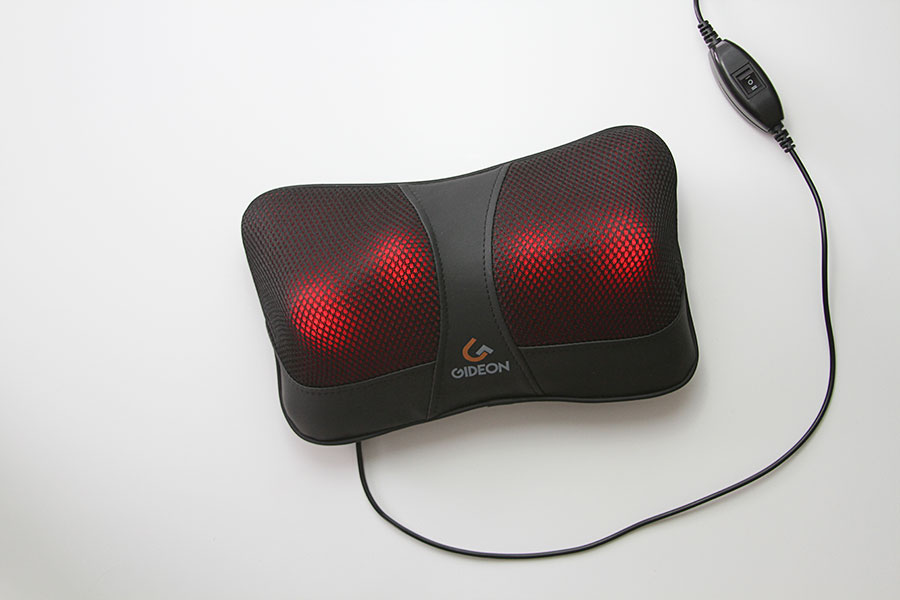
Avg Annual Return: 49%
If you enjoy or require massages, a massage pillow may not provide the same benefits as a professional massage, but it offers convenience and can save you money in the long run.
Pros:
- Massages anytime: With a massage pillow, you can enjoy a massage whenever you need one, without having to book an appointment or leave your home.
- Convenience: A massage pillow is easy to use and can be adjusted to your personal preferences, providing a relaxing and comfortable experience.
Cons:
- Self-adjustment required: Unlike a professional massage, you will need to adjust the massage pillow yourself to target specific areas or pressure points.
- Not as effective as professional massage: While a massage pillow can provide temporary relief, it may not address underlying issues or provide the same benefits as a professional massage.
- Limited range: Depending on the design of the pillow, it may not be able to reach certain spots or apply enough pressure to relieve tension in deeper muscles.
Even if the pillow only provides temporary relief and doesn't compare to the benefits of a professional massage, you could still see a significant return on investment.
-
Math:
- In the US, massages range from $40 to $145 per hour. Source
- The average amount spent on massages per year by those who received at least one massage is around $400.
- Lets say you save $100 per year on massages with a massage pillow.
- Investing in a $90 massage pillow that lasts for 3 years could potentially save you 49% per year.
Use your own numbers: Savings / ROI calculator
3. French Press / Aeropress / reusable coffee filter
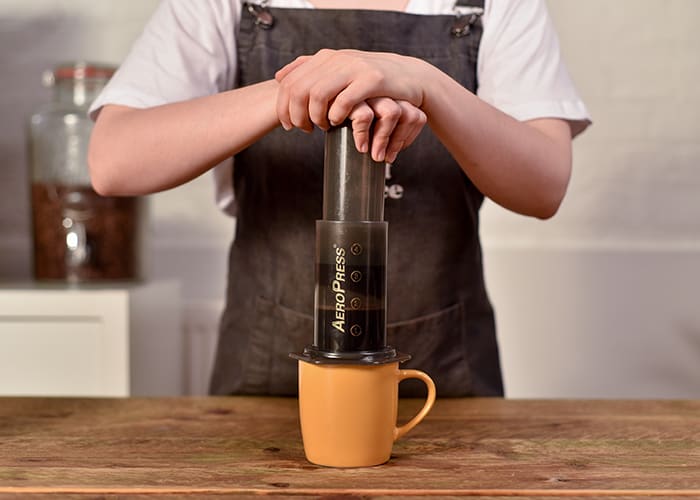
Avg Annual Return: 14%
For many people, coffee is a must-have beverage, and for good reason. Using disposable filters after each use is wasteful, but with an Aeropress, French Press, or reusable coffee filter, you can save money.
Pros:
- No need for disposable filters: With a reusable filter, you don't have to worry about constantly buying and throwing away disposable filters, which can save money and reduce waste.
- More control over brewing variables: Using a reusable filter allows you to have more control over variables like water temperature and coffee grounds, which can lead to a better-tasting cup of coffee.
- Quick and easy brewing process: Using a reusable filter can also make the brewing process quicker and easier, as you don't have to worry about fitting disposable filters or cleaning up as frequently.
Cons:
- May be messier and require more cleaning: Depending on the type of reusable filter you use, it may be messier and require more cleaning than disposable filters.
- May require more time: Brewing coffee with a reusable filter may take more time and effort than using disposable filters, especially if you need to clean the filter after each use.
Although the Aeropress is the most expensive option, it's also the fastest and a favorite among many coffee drinkers. There are even cheaper alternatives available if desired.
- For a single coffee drinker, the cost of disposable filters can range from $18.25 to $36.50 per year. Source
- Purchasing an Aeropress for $40 let's say you save $20 a year.
- If the Aeropress lasts for three years before breaking, you'll have a 14% annual profit.
Use your own numbers: Savings / ROI calculator
4. Crock Pot or Slow Cooker
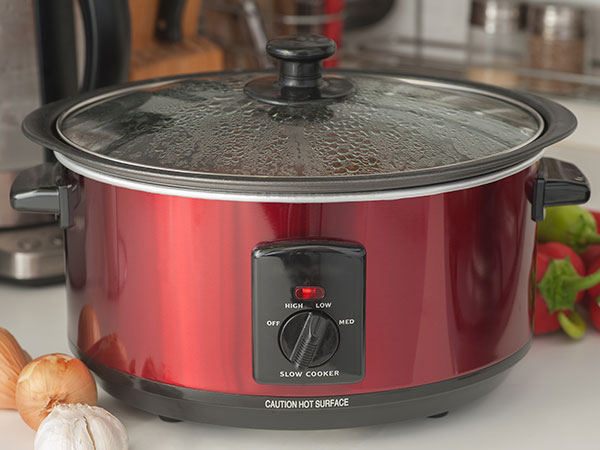
Slow cookers can be a great investment in your kitchen. They allow you to cook large batches of delicious meals, which you can then freeze and enjoy at a later time.
Slow cookers are also very versatile and can be used to cook a wide variety of dishes, including stews and even rice.
One of the benefits of using a slow cooker is that you can use less expensive cuts of meat and still achieve great flavor, as the low and slow cooking process tenderizes the meat.
So not only can you save money by buying cheaper ingredients, but you can also enjoy delicious, nutritious meals with very little effort.
Pros:
- Saves time and effort: Once the ingredients are in the slow cooker, you don't have to watch over it or stir the food, freeing up time for other tasks.
- Tenderizes meat: The low and slow cooking process helps break down the collagen in tougher cuts of meat, resulting in tender and flavorful dishes.
- Enhances flavors: Slow cooking allows the ingredients to fully meld and develop deeper flavors.
- Convenient for meal planning: You can prepare meals in advance and have them ready when you come home from work or other activities.
- Versatile: Slow cookers can be used for a variety of dishes, from soups and stews to casseroles and desserts.
- Energy-efficient: Slow cookers use less energy than ovens or stovetops.
Cons:
- Limited browning: Slow cookers don't provide the high heat necessary to brown or sear meats, which can result in less flavorful dishes.
- Limited texture: Slow cookers may not produce the same texture as other cooking methods, such as roasting or grilling.
- Risk of overcooking: If left in the slow cooker for too long, the food can become overcooked and lose its flavor and texture.
- Limited control: Slow cookers don't offer the same level of control over the cooking process as stovetops or ovens, such as adjusting the heat or stirring the food.
- Requires planning: Slow cookers require advance planning and preparation, as the cooking process can take several hours.
- May not be suitable for all dishes: Some dishes may not be well-suited for slow cooking, such as those that require high heat or quick cooking times.
Slow cookers are a convenient and versatile appliance that can save time and enhance the flavor of your dishes.
However, they may not be suitable for all dishes and may not provide the same level of control and texture as other cooking methods.
I dont quite know how to value a slow cooker since its hard to say how and even if I made a profit with it.
5. Smart Power Strip

Energy can still be drawn from a lot of electronics even when they are off (standby power). And according to this article a power strip save on 20-48% on energy consumption.
Pros:
- Increased Outlet Capacity: Power strips provide extra outlets to plug in multiple devices at the same time, which can be convenient when there are limited outlets in a room.
- Space Saving: With a power strip, you can consolidate multiple devices into a single location, which can help reduce clutter and save space.
- Surge Protection: Some power strips come with surge protection, which can help protect devices from voltage spikes and surges caused by lightning or electrical faults.
Cons:
- Overloading: It can be tempting to plug in too many devices into a power strip, which can lead to overloading the circuit and potentially cause a fire.
- Fire Hazard: If a power strip is not used properly, it can be a fire hazard. For example, if it is placed near flammable materials or if too many high-powered devices are plugged in at once, it could cause a fire.
- Limited Protection: Not all power strips come with surge protection, so it's important to check the label to see if it offers this feature.
6. Bread Machine

Avg Annual Return: 31%
If making your own bread by hand is too much work, a bread machine may be worth it for you.
Not only is it more convenient, but it's also more energy-efficient than baking in the oven, resulting in power savings.
Pros:
- Convenience: Bread machines are very convenient and easy to use. Simply add the ingredients and the machine takes care of the rest, including kneading, rising, and baking.
- Time-Saving: A bread machine can save a lot of time since it does most of the work for you. You don't have to spend time kneading the dough, waiting for it to rise, and monitoring the baking process.
- Cost-effective: Over time, using a bread machine can save you money compared to buying bread from a bakery.
Cons:
- Limited creativity: With a bread machine, you're limited to the recipes that are provided with the machine or that you find online. If you like experimenting with different flavors and textures, you may find this limiting.
- Quality: The quality of bread from a bread machine may not be as good as bread that's made manually. Bread machines may not produce the same crust and texture as bread that's baked in a traditional oven.
- Maintenance: Bread machines can be expensive to buy and maintain. They require regular cleaning and may need repairs or replacement parts over time.
- The average American consumes 53 pounds (24 kg) of bread per year. Source
- The average cost of a loaf of bread is $2.50 and the average weight is 1 pound. Source
- Assuming savings of $1 per loaf, that's $53 of savings per year.
- Purchasing a new bread maker for $70 with a lifetime of 3 years yields an average ROI of 31%.
Use your own numbers: Savings / ROI calculator
7. Swedish Dishcloth

Swedish dishcloths are a type of cleaning cloth that is becoming increasingly popular in households around the world.
They are made from a blend of cotton and cellulose fibers and are designed to be an eco-friendly alternative to paper towels and sponges.
- Pros:
- Reusable: Swedish dishcloths are reusable and can be washed and reused many times. This makes them a more eco-friendly option than disposable paper towels or sponges.
- Durable: Swedish dishcloths are durable and can last for months or even years with proper care.
- Versatile: They can be used for a variety of cleaning tasks, including wiping countertops, cleaning dishes, and even scrubbing surfaces.
- Cons:
- Absorbency: While Swedish dishcloths are designed to be absorbent, they may not be as absorbent as some other types of cleaning cloths or paper towels.
- Drying time: Swedish dishcloths can take longer to dry than other types of cleaning cloths, which can make them more prone to bacterial growth.
- Cost: While Swedish dishcloths can be more cost-effective over the long term, they may be more expensive upfront than disposable paper towels or sponges.
Swedish dishcloths can be a good eco-friendly option for cleaning tasks around the home, but they may not be ideal for every situation.
It's important to consider their pros and cons and determine if they're the right choice for your cleaning needs.
8. Soda Stream
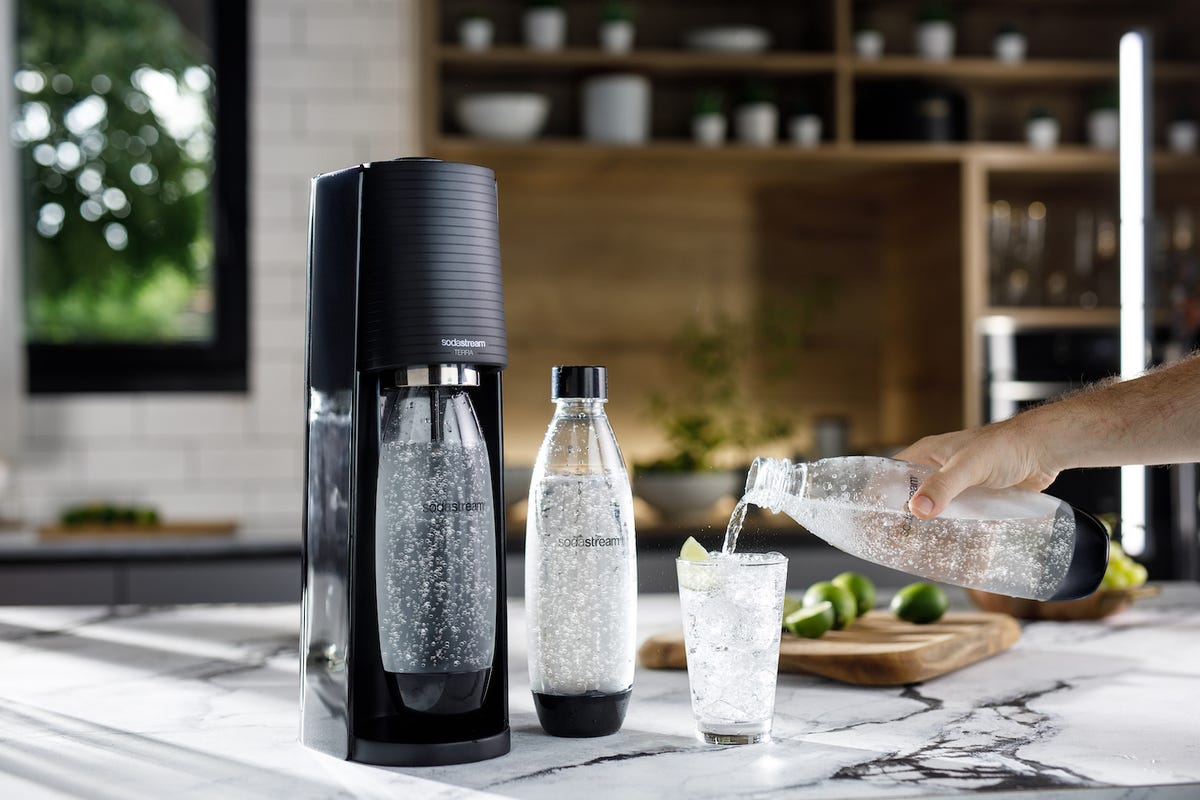
SodaStream is a popular home appliance that allows you to make your own carbonated water and soft drinks at home.
Pros:
- Cost-effective: Over time, using a SodaStream can save you money compared to buying carbonated beverages from the store.
- Customizable: You can customize the flavor and carbonation level of your drinks to your personal preferences.
- Eco-friendly: Using a SodaStream can reduce the amount of plastic bottles and cans that end up in landfills.
Cons:
- Upfront cost: The initial cost of a SodaStream machine and the CO2 cartridges can be expensive.
- Limited selection: While you can customize the flavor of your drinks, the selection of flavors and types of drinks available may be limited compared to store-bought options.
- Maintenance: The machine requires cleaning and upkeep to keep it working properly, and the CO2 cartridges need to be refilled or replaced periodically.
SodaStream can be a good choice for those who want to make their own carbonated beverages at home and reduce their environmental impact.
However, the upfront cost and maintenance requirements should be considered before making a purchase.
But it's important to keep in mind that it can also lead to increased consumption and spending.
If you end up drinking more soda because it's more convenient to make at home, then you may end up spending more money overall.
Remember that water is always the cheapest option, and if that doesn't do the trick, trying infused waters might be something you want to consider.
9. Water-Saving Shower Head
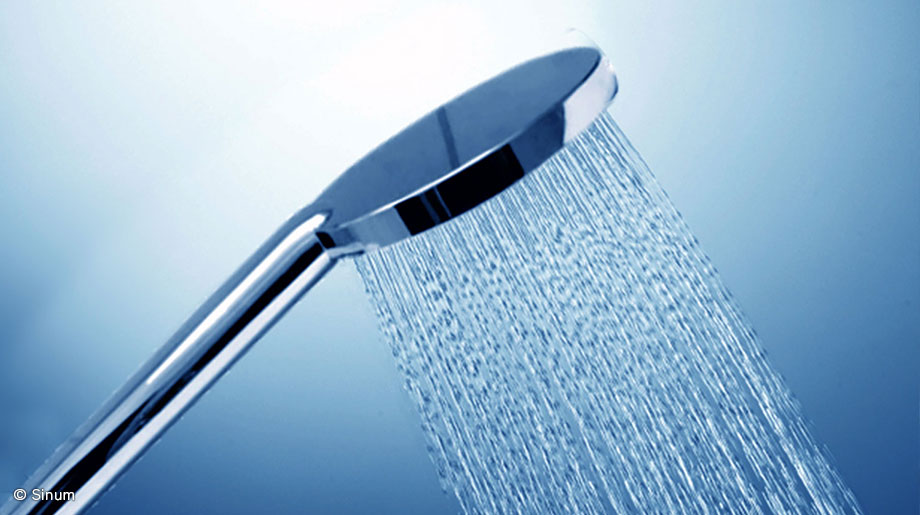
Water-saving showerheads are designed to reduce water consumption by using less water while still maintaining an adequate flow.
Here are some of the pros and cons of using water-saving showerheads:
Pros:
- Reduced water consumption: Water-saving showerheads can reduce the amount of water used during showers, which can lead to lower water bills and conserve water resources.
- Energy savings: Since less water is used, less energy is required to heat the water, which can lead to lower energy bills and reduced environmental impact.
- Improved water pressure: Many modern water-saving showerheads are designed to provide a strong and satisfying water flow, despite using less water.
Cons:
- Initial cost: Water-saving showerheads may be more expensive than traditional showerheads, although the cost can be recouped over time through lower water and energy bills.
- Temperature fluctuations: Some water-saving showerheads may be less effective at maintaining a consistent water temperature, which can result in uncomfortable fluctuations during use.
- Reduced shower time: The lower flow rate of water-saving showerheads may result in longer shower times to achieve the desired level of cleanliness, which can reduce the overall water savings.
Switching to water-saving showerheads can be a smart move for both the environment and your wallet.
The average family can save more than 330 kilowatt-hours of electricity annually, resulting in a savings of $76 per year if paying 0.23 cents per kilowatt-hour.
While the initial cost of a water-saving showerhead may be higher, the long-term savings make it a cost-effective investment for any household.
10. Safety Razor

Switching to a safety razor can be a great way to save money and reduce waste in your shaving routine. While the idea of a single blade razor may sound outdated, they are often made of high quality metal and can provide a superior shave compared to traditional plastic or multi-blade razors.
Pros:
- Cost-effective: Safety razors require only a single blade that can be replaced easily and inexpensively, making them more cost-effective than disposable razors in the long run.
- Environmentally friendly: Since safety razors only require a single metal blade, they generate much less waste compared to disposable razors.
- Superior shave: Many people prefer the close, clean shave provided by safety razors, especially when compared to disposable or multi-blade razors.
- Durability: Safety razors are often made from high-quality materials that are built to last, reducing the need for frequent replacements.
Cons:
- Initial cost: While safety razors can save money in the long run, they often require a higher initial investment compared to disposable razors.
- Learning curve: Shaving with a safety razor requires a bit of practice and technique, which can be intimidating for some users.
- Blade maintenance: Since safety razor blades are made of metal, they require proper maintenance and storage to prevent rust and corrosion.
- Risk of injury: As with any razor, there is a risk of cuts and nicks when using a safety razor, especially if not used properly.
100 top-of-the-line safety razors can be purchased for as little as ten dollars. By making the switch to a safety razor, you can save money while also reducing your impact on the environment
11. A Refillable Ink Cartridge
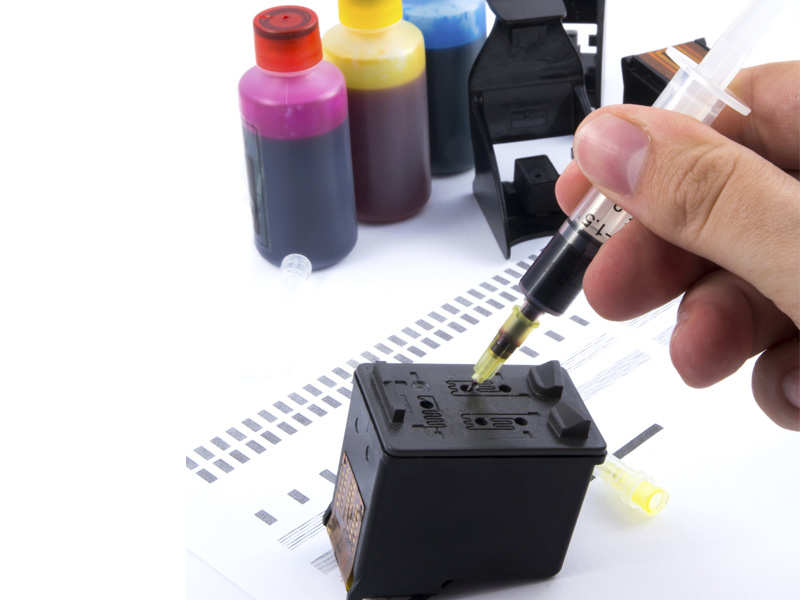
Refillable ink cartridges offer a cost-effective solution for people who do a lot of printing.
By refilling cartridges instead of buying new ones, significant savings can be achieved over time. This is especially beneficial for those who print frequently, as the cost of new cartridges can quickly add up.
With refillable cartridges, individuals can save money while still producing high-quality prints. It's really a must-have for businesses.
Pros:
- Cost-effective: Refilling ink cartridges can save money compared to buying new cartridges each time.
- Environmentally friendly: By refilling ink cartridges, less plastic and other materials end up in landfills or recycling centers.
- Convenience: Refillable ink cartridges can be refilled at home or at a refill station, saving time compared to going to the store to purchase new cartridges.
- Customization: With refillable ink cartridges, you can choose the specific ink colors and types that you need for your printing needs.
Cons:
- Messy: Refilling ink cartridges can be messy, and if not done properly, can result in ink spills and stains.
- Compatibility issues: Not all printers are compatible with refillable ink cartridges, so it's important to check the printer's specifications before purchasing.
- Quality issues: The quality of the ink used to refill cartridges can vary, potentially leading to lower quality prints.
- Wear and tear: Refilling ink cartridges repeatedly can cause wear and tear on the cartridge, leading to eventual failure and the need for replacement.
12. A Reusable Food Wrap
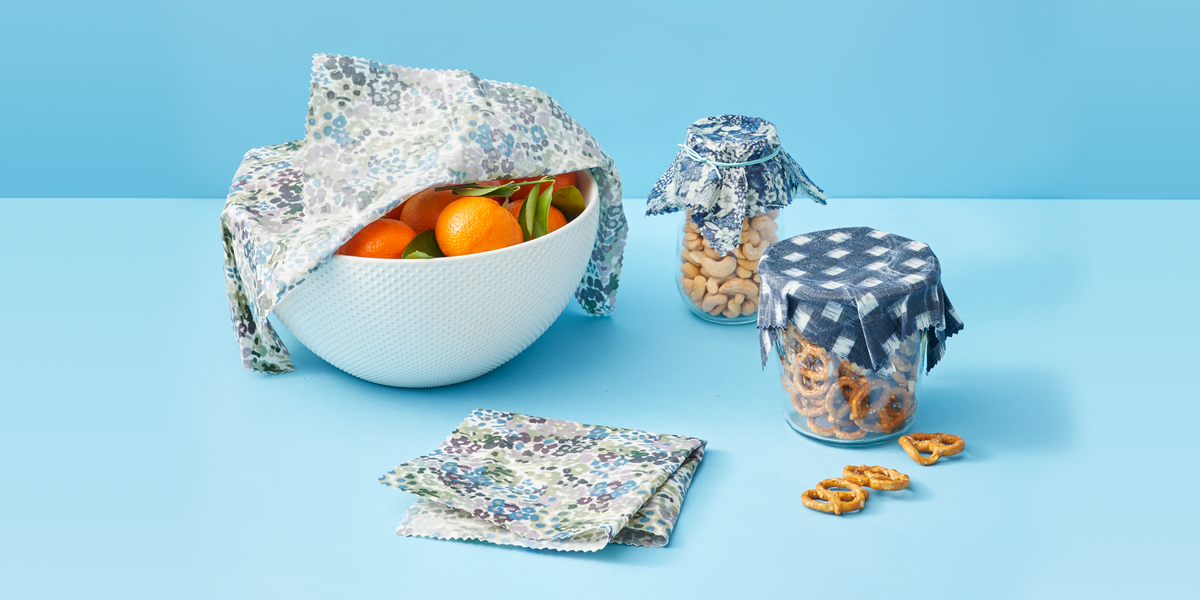
Pros:
- Environmentally friendly: Reusable food wraps help reduce waste and plastic usage, leading to a more sustainable lifestyle.
- Versatile: These wraps can be used to cover a variety of food items, from sandwiches to fruits and vegetables.
- Durable: High-quality reusable food wraps can last for several months or even years, making them a long-lasting investment.
- Cost-effective: Over time, using reusable food wraps can save money compared to constantly buying disposable plastic wrap.
Cons:
- Limited uses: Reusable food wraps may not be suitable for all types of foods or for extended storage periods.
- Cleaning requirements: These wraps must be washed and dried properly between uses to prevent contamination and maintain their effectiveness.
- Initial investment: High-quality reusable food wraps can be more expensive than disposable plastic wrap, which may be a barrier for some people.
- Hygiene concerns: If not cleaned properly, reusable food wraps can harbor bacteria and germs, potentially leading to foodborne illnesses.
13. A smart thermostat
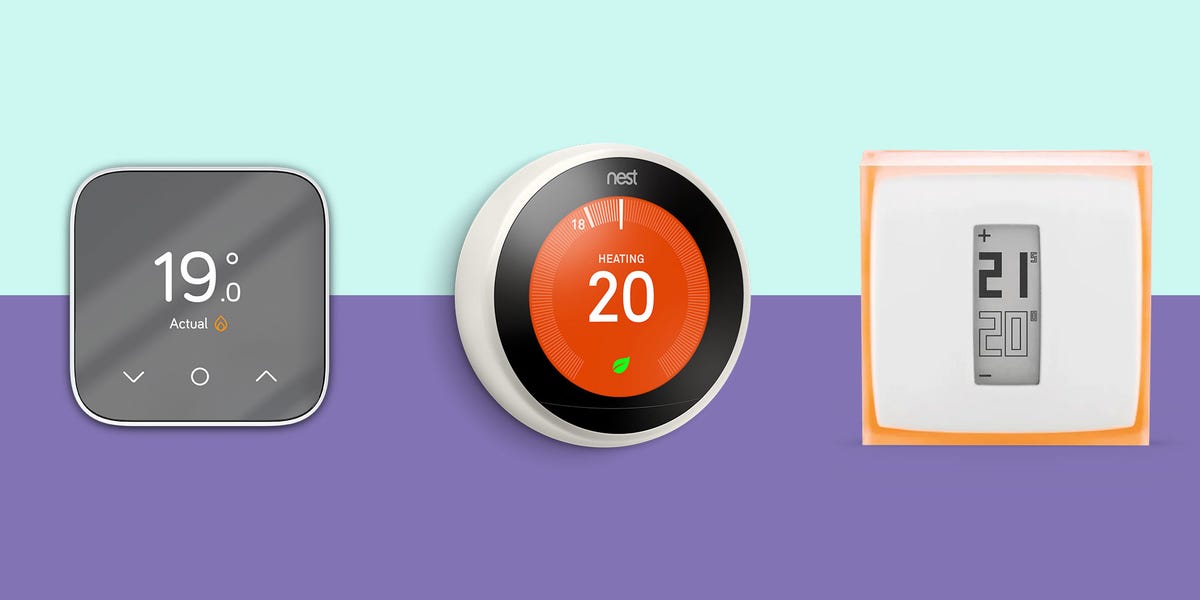
According to the Environmental Protection Agency, smart thermostats can save homeowners about 8% on their utility bills. If your utility bills are high, be sure to give this one a try!
Pros:
- Energy savings: Smart thermostats can help save energy and lower utility bills by automatically adjusting temperatures based on occupancy and usage patterns.
- Convenience: With remote control and programmable features, smart thermostats offer a convenient way to manage home temperature and heating/cooling settings.
- Customization: Smart thermostats can be programmed to fit individual schedules and preferences, leading to a more comfortable and personalized living space.
- Integration: Smart thermostats can integrate with other home automation systems, allowing for seamless control and management of various devices.
Cons:
- Initial investment: Smart thermostats can be more expensive than traditional thermostats, which may deter some people from upgrading.
- Learning curve: With advanced features and programming, some users may need time to learn how to properly use and maximize the benefits of a smart thermostat.
- Internet dependence: Smart thermostats require internet access to function properly, so a disruption in internet service can impact its performance.
- Compatibility issues: Smart thermostats may not be compatible with all heating/cooling systems, requiring additional upgrades or installation costs.
14. Compost Bin
Indoor compost bins offer convenience, reduce food waste, produce nutrient-rich soil for plants, and save money on buying soil.
While requiring regular maintenance, they provide a personal touch to sustainable living and reduce environmental impact.
Pros:
- Convenience: Indoor compost bins offer a convenient way to dispose of food waste without the need to travel outside to a traditional compost bin.
- Nutrient-rich soil: Composting food waste can produce nutrient-rich soil that can be used to nourish houseplants or outdoor gardens.
- Reduces food waste: Composting reduces food waste in landfills, which helps reduce methane emissions and benefits the environment.
- Odor control: Many indoor compost bins are designed with odor control features to help reduce unpleasant smells in the home.
Cons:
- Space requirements: Indoor compost bins require space in the home to accommodate the bin and can take up valuable counter or floor space.
- Pests: Composting indoors can attract pests such as fruit flies or rodents if not properly managed.
- Maintenance: Composting requires regular maintenance and attention to ensure the bin is functioning properly and not creating any unpleasant odors.
- Time and effort: Composting takes time and effort to properly manage and may not be suitable for those with busy schedules or limited time.
15. Silicone Baking Mat
Pros:
- Reusable and eco-friendly: Silicone baking mats are reusable and help reduce waste compared to disposable options, making them an environmentally friendly choice.
- Non-stick surface reduces the need for cooking spray or parchment paper: The non-stick surface of silicone baking mats can eliminate the need for cooking spray or parchment paper, reducing waste and making cleanup easier.
- Durable and long-lasting: Silicone baking mats are durable and can last for several years, making them a worthwhile investment.
- Easy to clean: Silicone baking mats are easy to clean with soap and water or in the dishwasher.
- Can withstand high temperatures: Silicone baking mats can withstand high temperatures, making them suitable for use in ovens, microwaves, and freezers.
Cons:
- Higher upfront cost compared to disposable options: Silicone baking mats can be more expensive upfront than disposable options, which may be a barrier for some people.
- Not suitable for all baking needs (such as greasy or heavily seasoned foods): Silicone baking mats may not be suitable for all types of baking, such as those that involve greasy or heavily seasoned foods.
- May not provide the same level of crispiness or browning as traditional baking methods: Some people may prefer the crispiness or browning that traditional baking methods provide, which silicone baking mats may not replicate.
- May retain odor or flavor from certain foods: Silicone baking mats may retain odor or flavor from certain foods, which can affect the taste of subsequent baked goods.
16. Cheap Glasses

If you have trouble seeing clearly at a distance or up close, you may not need progressive glasses yet.
Instead, you could benefit from buying reading glasses (+) or distance glasses (-), but it's important to try them out before making a purchase. If the glasses don't work for you, it could be a waste of money.
On average, prescription glasses cost around $200 and expensive reading/distance glasses are like $5.
The ROI is insanely high and is the reason why it deserves to be on this list.
17. A Solar-Powered Power Bank

a solar-powered power bank can be a good investment if you already need a battery for your phone or other devices and want a more sustainable and convenient way to charge them.
Pros:
- Pros:
- Environmentally friendly: A solar-powered battery charger is a sustainable and eco-friendly way to charge your devices. It utilizes renewable energy from the sun, which does not produce harmful emissions or contribute to carbon footprints.
- Convenience: It allows you to charge your devices on-the-go without needing access to a power outlet. This can be especially useful when traveling or in situations where electricity is not readily available.
- Cost-effective: While the initial cost of a solar-powered battery charger may be higher than traditional chargers, over time, it can save you money on your electricity bills.
Cons:
- Cons:
- Weather-dependent: The effectiveness of a solar-powered battery charger is highly dependent on the weather conditions. It may not work well on cloudy or rainy days, which could be problematic if you need to charge your devices urgently.
- Slower charging: Compared to traditional chargers, a solar-powered battery charger may take longer to charge your devices. This can be a disadvantage if you are in a hurry and need your device charged quickly.
- Requires sunlight: A solar-powered battery charger can only charge your devices when it is exposed to sunlight. This means you may need to position it in direct sunlight, which can be challenging depending on the location and time of day.
18. Electric Mattress Pad or Electric Blanket
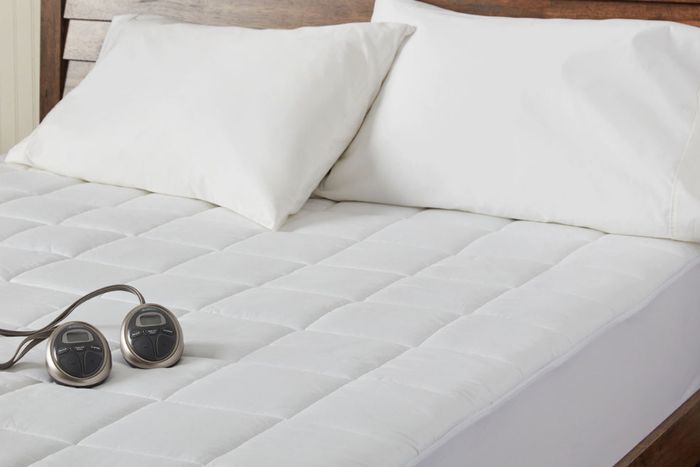
If you live in a colder area, it can be a good idea to heat up just your bed at night and lower the temperature of your home.
Pros:
- Cost-effective: Using an electric mattress pad or electric blanket can be a cost-effective way to keep warm at night, especially if you only need to heat up one bed instead of the whole house.
- Energy-efficient: Electric mattress pads and blankets can be more energy-efficient than running a central heating system, as they use less energy to heat up a smaller space.
- Adjustable temperature: Many electric mattress pads and blankets come with adjustable temperature settings, allowing you to find the perfect level of warmth for your needs.
- Improved sleep: For some people, the gentle warmth provided by an electric mattress pad or blanket can help them fall asleep faster and sleep more soundly.
Cons:
- Fire hazard: There is a risk of fire associated with electric blankets and mattress pads if they are not used properly or if they are damaged.
- Safety concerns: It's important to ensure that the electric blanket or mattress pad is in good condition and does not pose a risk of electrocution.
- Potential discomfort: Some people find that the cords and controls associated with electric blankets and mattress pads can be uncomfortable or inconvenient.
- Limited use: While electric blankets and mattress pads can be effective for heating up a bed, they may not be suitable for use during other parts of the day or in other areas of the house.
Depending on how you live and how cold it gets, this can be highly cost-effective. The average cost of heating for US homes ranges from $800 to $2300 per year, depending on the type of heating system used.
You can buy a heating pad for as low as $16, which is a great way to save on heating costs while still staying warm and comfortable at night.
19. Air Fryer

If used in moderation and for specific dishes, a fryer can be a good way to save time, effort, and money in cooking.
Pros:
- Faster cooking time: Fryers cook food quickly, reducing cooking times by up to 50%, which can be convenient for busy households.
- Even cooking: Fryers distribute heat evenly, ensuring that food is cooked uniformly and reduces the risk of undercooked or overcooked food.
- Crispy texture: Fryers can create a crispy and crunchy texture in food that is difficult to achieve with other cooking methods, making it a popular choice for foods like chicken wings or french fries.
- Versatility: Fryers can be used to cook a variety of foods, including meat, vegetables, and even desserts, making them a versatile kitchen appliance.
Cons:
- Unhealthy cooking method: Fried foods are often high in fat and calories, which can be detrimental to health if consumed in excess.
- Messy: Cooking with a fryer can be messy, with oil splatters and spills common, which can make cleaning up more difficult.
- Requires frequent oil changes: Fryers require regular oil changes to maintain their effectiveness and prevent the build-up of harmful toxins, which can be time-consuming and costly.
- Fire hazard: Fryers can be a fire hazard if not used correctly, particularly if the oil overheats or comes into contact with water.
20. Dryer Balls
:max_bytes(150000):strip_icc():format(webp)/SPR-HOME-8-best-wool-dryer-balls-4781065-060b44386a174fa6bd30b3d29b624841.jpg)
Dryer balls are a cost-effective and popular alternative to dryer sheets and fabric softeners.
A set of six dryer balls can typically be purchased for around $14 and should last for several years.
Pros:
- Saves money: Dryer balls are reusable and can last for hundreds of loads, making them a cost-effective option compared to dryer sheets and fabric softeners.
- Shorter drying time: Dryer balls help to increase air circulation and reduce static cling, which can shorten drying time and save energy.
- Eco-friendly: Dryer balls are made from natural materials and do not contain any harsh chemicals, making them an eco-friendly option for your laundry routine.
- Safe for sensitive skin: Since dryer balls do not contain any harsh chemicals, they are a safe and gentle option for people with sensitive skin.
- Softens clothes: Dryer balls can help to soften clothes by breaking up the stiffness caused by soap residue.
Cons:
- Can be noisy: Dryer balls can create noise during the drying cycle, which may be a concern for some people.
- Not effective on heavily soiled items: Dryer balls may not be effective on heavily soiled items as they do not contain any cleaning agents.
- Can cause pilling: Dryer balls can cause pilling on some fabrics, particularly on materials that are prone to pilling.
- May not work with all types of fabrics: Dryer balls may not work as effectively with certain types of fabrics, such as synthetic materials or delicate items.
- Can get lost: Since dryer balls are small and lightweight, they can easily get lost in the laundry, especially if you have a large load.










